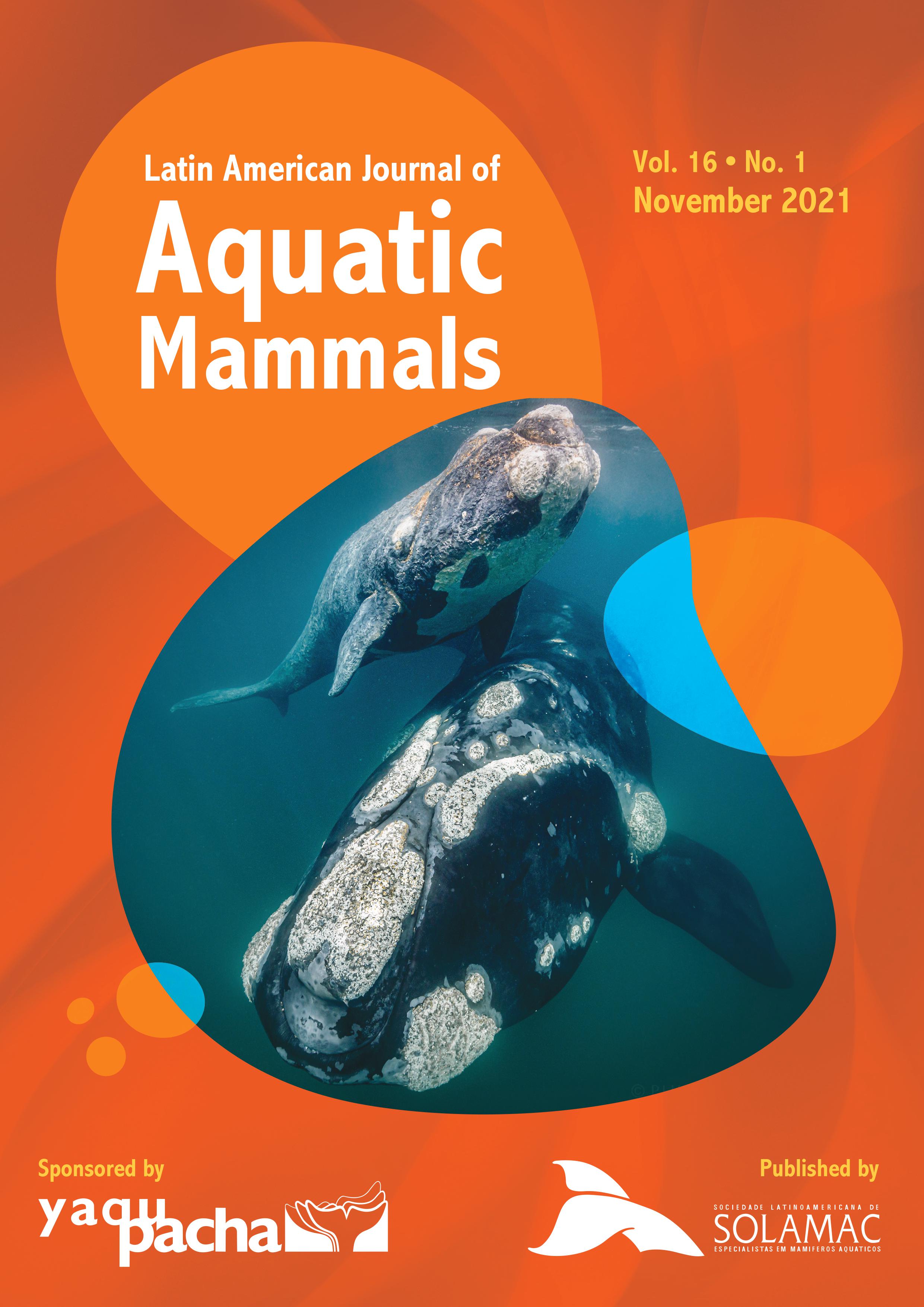Humpback whales in Banderas Bay, Mexico: relative abundance and temporal patterns between 2004 and 2017
DOI:
https://doi.org/10.5597/lajam00269Abstract
Banderas Bay, Mexico is an important breeding and transit area for the North Pacific humpback whale (Megaptera novaeangliae) population. In this paper we estimated relative abundance (RA = number of whales/hours of navigation) as a proxy to assess population temporary patterns in the area. We analyzed data from 14 breeding seasons (2004-2017), collected between December and March each winter. A total of 8,013 whales were observed in 1,394.6 navigation hours. Average seasonal RA was 5.7 whales per hour with a maximum of 7.5 (2013) and a minimum of 4.0 (2016). Sea surface temperature (SST) averaged 25.1°C and remained within the range considered optimal for humpback whale reproduction areas. SST showed no significant correlation with RA (r = 0.183). Inter-seasonal RA values suggested an increase throughout the study period, although the increase was not statistically significant (R = 0.32; R2 = 0.10; t = 1.15, p > 0.05). Intra-seasonal analyses showed that RA in December and January were significantly higher (U = 150, p < 0.05) than in February and March; this pattern was consistent throughout the seasons of study. These results represent a shift in the intra-seasonal abundance peak relative to previous studies when most whales were observed between January and February. It is important to recognize changes in population parameters of humpback whales in breeding areas to improve management practices. This study also highlights the potential of opportunistic platforms, such as whale watching tour boats, as viable sources of quality information, particularly in contexts when funding is limited.
Downloads
Published
How to Cite
Issue
Section
License
Authors who publish with this journal agree to the following terms:- Authors retain copyright and grant the journal right of first publication with the work simultaneously licensed under a Creative Commons Attribution License that allows others to share the work with an acknowledgement of the work's authorship and initial publication in this journal.
- Authors are able to enter into separate, additional contractual arrangements for the non-exclusive distribution of the journal's published version of the work (e.g., post it to an institutional repository or publish it in a book), with an acknowledgement of its initial publication in this journal.
- Authors are permitted and encouraged to post their work online (e.g., in institutional repositories or on their website) prior to and during the submission process, as it can lead to productive exchanges, as well as earlier and greater citation of published work (See The Effect of Open Access).


